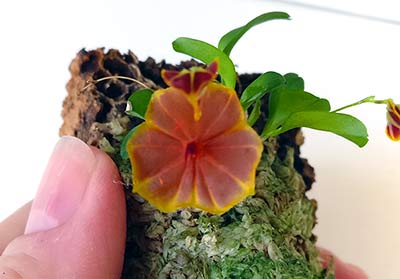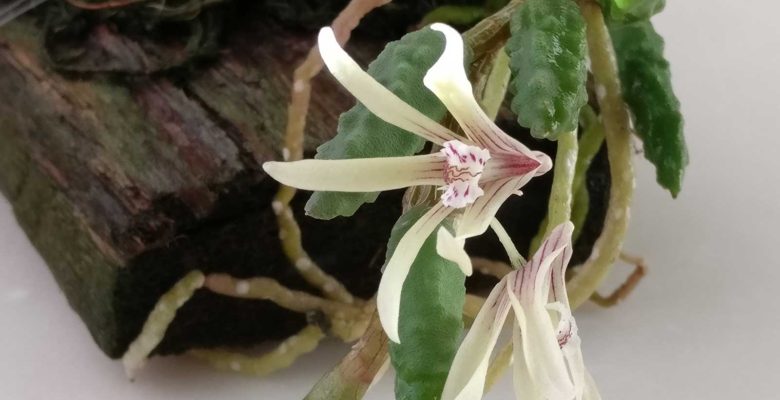Taking a cue from Mother Nature
By Suzy Massey
Many orchids are epiphytes, plants that are not rooted in the ground, but grow attached on other plants, like tree branches. Their roots are exposed to the air and are able to dry out in between rainfalls.
You can buy orchids mounted on wood, cork or compressed tree fern. The plants vary in size. My LC Mini Song is mounted on a huge slab of tree fern and it takes two hands to water it.

One of my smallest orchids is the Lepanthes telipogoniflora which is on a tiny piece of cork.
I like having mounted orchids because it is easier for me to get the watering right. It is harder for me to over-water a mounted orchid. Unlike an orchid in a pot, it is very easy to tell if a mounted plant is dry or still moist. Most of them get watered every day; a task that that is made easier because most of them hang near a sink or live in one of my orchidariums (two converted fish tanks) where they live close together and I can mist them with a sprayer.
If you have a phalaenopsis (moth orchid), you have an epiphyte whose ancestors grew on trees. Here is an example of a Maine Orchid Society member’s beautiful phalaenopsis schilleriana mounted on a branch:

Notice how the plant looks like it is planted upside down. Actually, that is how they grow in nature. As we mentioned in an earlier post, you need to careful watering a potted phalaenopsis (or phal), because if you let water pool in the crown of the plant, it can develop crown rot and die. Mounted the way Mother Nature intended allows for the water to slide down away from the orchid’s crown.
Suzy Massey has been a member of the Maine Orchid Society since 2006.
If you have questions about growing orchids, you are always welcome to attend a meeting and take advantage of our members’ knowledge and experience.

